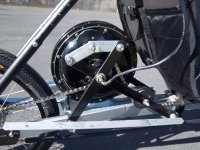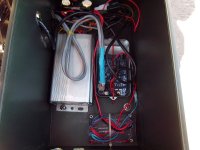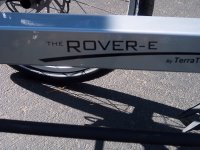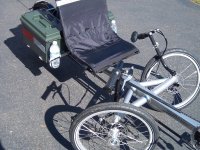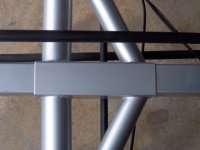Rassy
1 MW
Just decided to build up another trike, don't ask why. It will be similar to my current TerraTrike Path, but lower geared with a 23 tooth freewheel on the NuVinci instead of an 18 tooth cog. I'll use it locally on our steep hills and when pulling my trailer. Will also have two trikes for use when friends and relatives visit.
This will be a low speed low power trike, and this build will probably only be of interest to someone thinking about adding a mid-drive to a Rover trike.
Below is the 42 pound trike right out of the box. It comes as a single speed for $699 directly from TerraTrike. Utah Trikes doesn't even handle the single speed, but the crank will be replaced with a 48T freewheel and the rear hub will be replaced with a NuVinci N171B auto shift (Developers kit).
Edit: This trike was changed back to a pedal trike with a 7 speed derailleur in 2017 and sold. The 9C motor and Nuvinci auto shift transmission have also been sold.
This will be a low speed low power trike, and this build will probably only be of interest to someone thinking about adding a mid-drive to a Rover trike.
Below is the 42 pound trike right out of the box. It comes as a single speed for $699 directly from TerraTrike. Utah Trikes doesn't even handle the single speed, but the crank will be replaced with a 48T freewheel and the rear hub will be replaced with a NuVinci N171B auto shift (Developers kit).
Edit: This trike was changed back to a pedal trike with a 7 speed derailleur in 2017 and sold. The 9C motor and Nuvinci auto shift transmission have also been sold.




